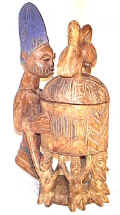 |
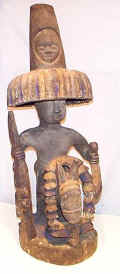 |
|||
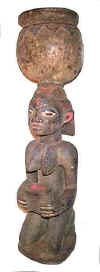 |
 |
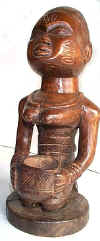 |
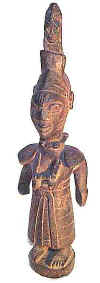 |
|
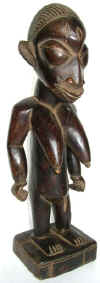 |
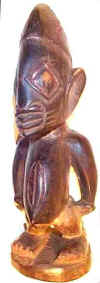 |
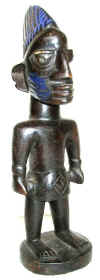 |
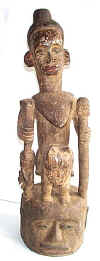 |
|
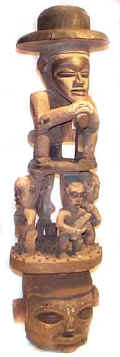 |
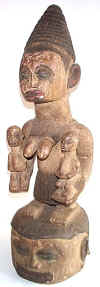 |
 |
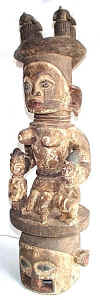 |
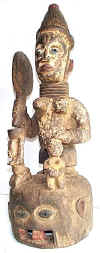 |
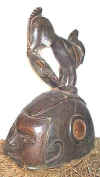 |
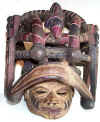 |
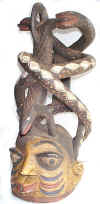 |
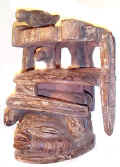 |
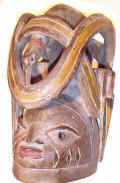 |
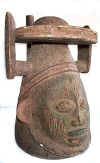 |
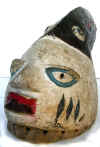 |
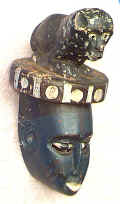 |
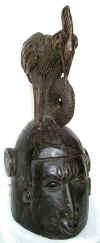 |
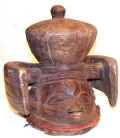 |
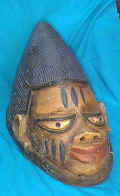 |
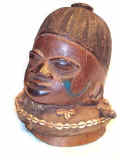 |
 |
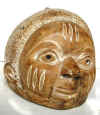 |
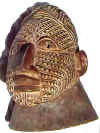 |
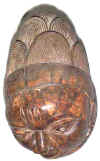 |
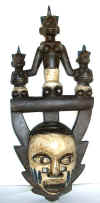 |
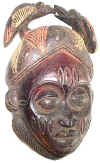 |
  |
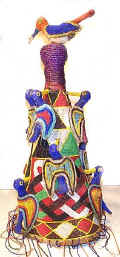 |
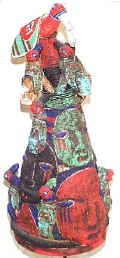 |
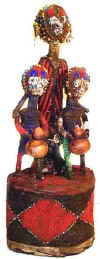 |
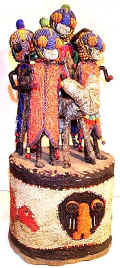 |
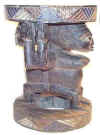 |
 |
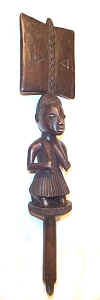 |
 |
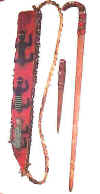 |
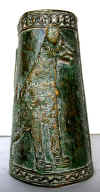 |
 |
TRIBAL AFRICAN ART
YORUBA
Nigeria, Republic of Benin and Togo
The Yoruba
people, numbering over 12 million, are the largest nation in Africa with an art-producing
tradition. Most of them live in southwest Nigeria, with considerable communities further
west in the Republic of Benin and in Togo. They are divided into approximately twenty
separate subgroups, which were traditionally autonomous kingdoms. Excavation at Ife of
life-sized bronze and terracotta heads and full-length figures of royalty and their
attendants have startled the world, surpassing in their portrait-like naturalism
everything previously known from Africa. The cultural and artistic roots of the Ife
masters of the Classical Period (ca. 1050—1500) lie in the more ancient cultural
center of Nok to the northeast, though the precise nature of this link remains obscure.
Now two-third of the Yoruba are farmers. Even if they live in the city, they keep a hut close to the fields; they grow corn, beans, cassava, yams, peanuts, coffee, and bananas. It is they who control the markets -- along with the merchants and artisans: blacksmiths, copper workers, embroiderers, and wood sculptors, trades handed down from generation to generation.
The Yoruba gods form a true pantheon; the creator god, Olodumare, reigns over almost four hundred orisha (deities) and nature spirits who live among the rocks, trees, and rivers. Their figures, more often of Shango (also spelled Sango and Sagoe), deity of thunder and lightning are carved from wood and kept in shrines. Sculptors have studios in which apprentices learn the techniques of the master and his stylistic preferences. Throughout Yorubaland, human figures are represented in a fundamentally naturalistic way, except for bulging eyes; flat, protruding, and usually parallel lips; and stylized ears. Within the basic canon of Yoruba sculpture, many local styles can be distinguished, down to the hand of the individual artist. Today, Nigeria is structured by a number of cults. The Gelede cult pays homage to the power of elderly women. During Gelede festivities, helmet masks carved in the form of a human face are worn. On top of the head there is either an elaborate coiffure or a carved representation of a human activity. The masks of the Epa cult, which is connected with both the ancestors and agriculture, vary enormously according to the town in which they appear. The mask proper, roughly globular, has highly stylized features that vary little; but the superstructure, which may be four feet or more in height, is often of very great complexity. Generally, they are worn during funerals or rites of passage ceremonies and characteristically they are composed of many elements – usually a human-face helmet mask topped by an elaborate standing figure. When not worn, these masks are kept in shrines where they are honored with libations and prayers. The Ogboni society brass figures, called Edan, are cast in pairs and attached to spikes and a chain runs from head to head to join the pair. They are worn over the shoulders of Ogboni members as sign of office or as an amulet. Large brass figures, called onile, are carved as a pair and represent the male and female aspects of Ile, the earth Goddess. A variety of palm nut containers used for divination are made with caryatides depicting women. Societies and cults still hold celebrations today during the many masked festivities in which costumes of fiber or fabric, masks, music, and dance form one interlocking whole. The most widely distributed cult is of twins, ibeji, whose birth among the Yoruba is unusually frequent. An ibeji statuette is to be made, if one twin died; this ibeji remained with the surviving twin and was treated, fed, and washed as a living child. Their effigies, made on the instructions of the oracle, are among the most numerous of all classes of African sculpture. The equestrian figure is a common theme in Yoruba wood sculpture. It reflects the importance of the cavalry in the campaigns of the kings who created the Oyo Empire as early as the sixteenth through the eighteenth centuries. Only Yoruba chiefs and their personal retainers were privileged to use the horse. Nevertheless, the rider and the horse remained an important social symbol and offered an exciting subject for artistic imagination and skill. The diminutive animal and the dwarfish legs of the horseman are typical for this type of figures. Carved doors and house posts are found in shrines and palaces and in the houses of important men. Fulfilling purely secular functions are bowls for kola nuts, offered in welcoming a guest; ayo boards for the game, known also as wari, played with seeds or pebbles in two rows of cuplike depressions; and stools, spoons, combs, and heddle pulleys. Additional important arts include pottery, weaving, beadworking and metalsmithing.